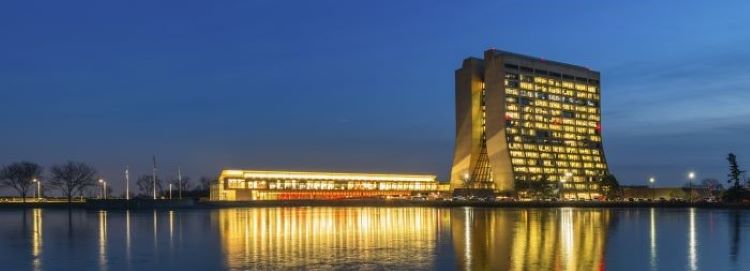International Muon Collider Collaboration: Demonstrator Workshop
One West
Fermilab - Wilson Hall

Muon Cooling Demonstrator Workshop
High-energy muon colliders combine cutting edge discovery potential with precision measurements. Because muons are point-like particles they can achieve comparable physics to protons at much lower centre-of-mass energies. Due to the muon’s high mass, synchrotron radiation production is suppressed compared to electrons. This makes a high energy muon collider an excellent candidate for discovery at the energy frontier. The International Muon Collider Collaboration (IMCC) is charged by CERN to deliver an assessment of the potential for a muon collider to be a future collider facility and the required R&D to deliver such a facility. The IMCC is supported by the EU MuCol study. The Particle Physics Project Prioritisation Panel has identified the muon collider as an important future possibility for the US particle physics community.
One of the key challenges in development of the muon collider is delivery of a high brightness muon beam, which is essential to produce sufficient luminosity. Ionisation cooling is the technique that is planned to increase beam brightness. The ionisation cooling technique has been demonstrated in principle by the Muon Ionisation Cooling Experiment. However, a number of questions remain that must be answered in order to prove that the technique can be applied in practice. The IMCC foresees a Muon Cooling Demonstrator and associated development programme that must be executed in order to deliver the muon collider.
In this workshop we will:
- Review the progress on design of the muon cooling Demonstrator.
- Identify potential host sites and associated timelines within which the Demonstrator could be deployed.
- Identify associated science programmes that could be synergistic with the development, construction and operation of the Demonstrator.
Akira Sato
Akira Yamamoto
Alan Bross
Alexander Zlobin
Alexej Grudiev
Angela Papa
Ankur Dhar
Ao Liu
Ben Freemire
Ben Rosser
Ben Simons
Bernd Stechauner
Brendan Casey
Carlo ROSSI
Carmelo Barbagallo
Caroline Riggall
Cary Yoshikawa
Cecilia Gerber
Chris Rogers
Daniel Kaplan
Daniel Schulte
Daniele Calzolari
Dario Augusto Giove
David Neuffer
Davide Zuliani
Delbert Larson
Derun Li
Diktys Stratakis
Dillon Merenich
Donatella Lucchesi
Elias Metral
Emanuela Barzi
Emilio Nanni
Emilio Radicioni
Emma Snively
Giorgio Ambrosio
Giulio Stancari
Giuseppe Scarantino
Guihao Lu
Gustaaf Brooijmans
Igor Syratchev
Jason Crnkovic
Jeffrey Eldred
Jim Norem
Jingyu Tang
Joseph Berg
Ka hei martin Kwok
Karie Badgley
Karol Krizka
Karri Di Petrillo
Keng Lin
Kevin Black
Kyle Capobianco-Hogan
Lance Cooley
Luca Bottura
Lucio Rossi
Ludovico Tortora
Lukasz Krzempek
Makoto Yoshida
Marco Statera
Maria Rosaria Masullo
Mark Palmer
Massimo Casarsa
Maurizio Bonesini
Meng Lyu
Michael Hedges
Mithlesh Kumar
Nadia Pastrone
Natalia Milas
Nicholas Smith
Paolo Mereu
Patricia Tavares Coutinho Borges de Sousa
Patrick Hurh
Paul-Bogdan Jurj
Pavel Snopok
Pushpalatha Bhat
Rebecca Taylor
Rhea Stewart
Ricardo dos Santos Augusto
Rob van Weelderen
Robert Rimmer
Robert Ryne
Roberto LOSITO
Roger Ruber
Rui Franqueira Ximenes
Ruihu Zhu
Samuel Fine
Satoshi Awaji
Satoshi Mihara
Sergey Belomestnykh
Sergo Jindariani
Shivani Lomte
Shusei Kamioka
Siara Fabbri
Soren Prestemon
Sridhara Dasu
Stefania Ricciardi
Stephen Brooks
Stephen Gourlay
Steven Russell
Tianhuan Luo
Tristan du Pree
Tsutomu Mibe
Vasiliy Morozov
Vikas Teotia
Vito Lombardo
Vladimir Shiltsev
Walter Hopkins
Xueying Lu
Yagmur Torun
Yasar Onel